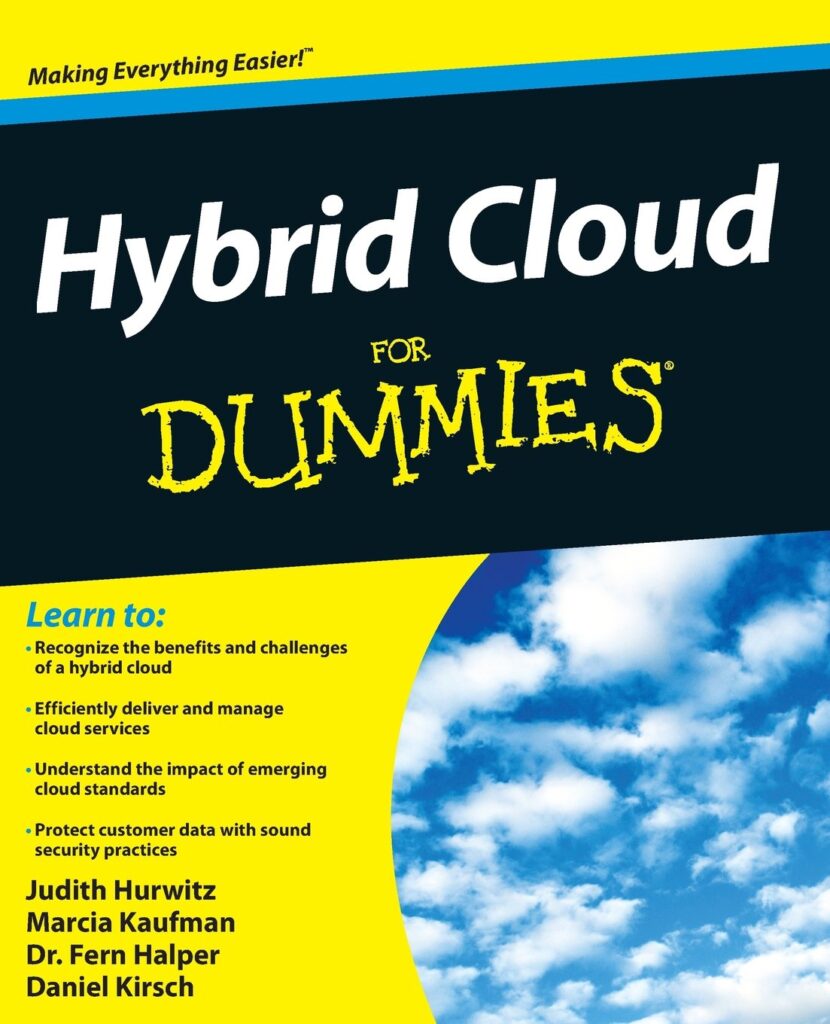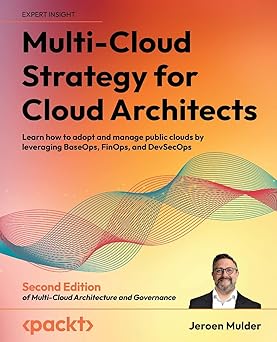In today’s digital-first world, “moving to the cloud” is no longer a question of if, but how. As businesses navigate their cloud journey, two terms consistently create confusion: hybrid cloud and multicloud. While often used interchangeably, they represent distinct architectural strategies with different goals, benefits, and challenges.
Understanding the real difference isn’t just about semantics; it’s about making informed decisions that will shape your organization’s security, agility, and bottom line. This article will demystify these concepts, highlight their core distinctions, and help you determine which approach—or combination of both—is right for your business.
What is a Hybrid Cloud? The Best of Both Worlds
A hybrid cloud architecture is a computing environment that connects a company’s on-premises private cloud infrastructure with one or more public cloud services. The key to a true hybrid cloud is integration and interoperability. These different environments are engineered to work together as a single, cohesive unit, allowing data and applications to be shared between them seamlessly.
Think of it like a hybrid car. It has both a gasoline engine and an electric motor, and it intelligently switches between them to optimize for performance and efficiency. Similarly, a hybrid cloud allows you to run your applications in the most appropriate location. For example, you might keep sensitive customer data on your highly secure private cloud (on-premises) while leveraging the immense computational power of a public cloud like Amazon Web Services (AWS) or Microsoft Azure for development, testing, or handling unpredictable traffic spikes—a practice known as “cloud bursting.”
This approach gives businesses a centralized way to manage their resources, balancing the control and security of a private cloud with the scalability and innovation of the public cloud.
What is a Multicloud? Picking the Best Tool for the Job
A multicloud strategy involves using cloud services from two or more different public cloud vendors. Unlike a hybrid cloud, the primary goal here isn’t necessarily to create a single, integrated environment. Instead, the focus is on selection and optimization.
Imagine you’re building a house. You might get your lumber from one supplier known for quality, your windows from another that offers the best energy efficiency, and your fixtures from a third with the best prices. You’re choosing the best-in-class product for each specific need.
That’s the essence of a multicloud strategy. An organization might use AWS for its robust S3 storage and EC2 compute instances, leverage Google Cloud for its cutting-edge machine learning and data analytics platform BigQuery, and rely on Microsoft Azure for its seamless integration with Office 365 and Active Directory. Each cloud is chosen for its specific strengths. While these services can be made to work together, direct interoperability is not a prerequisite for a multicloud architecture. The primary driver is avoiding vendor lock-in and cherry-picking the best services from a competitive market.
The Core Difference: Integration vs. Selection
The fundamental distinction between hybrid cloud and multicloud boils down to their core purpose. It’s a matter of integration versus selection.
- Hybrid Cloud is about INTEGRATION: Its purpose is to create a unified environment from different types of infrastructure (private and public). The defining feature is the orchestrated connection that allows them to function as one. A hybrid cloud can exist with just one public cloud provider connected to a private data center.
- Multicloud is about SELECTION: Its purpose is to leverage services from different public cloud vendors. The defining feature is the freedom to choose the best platform for each specific workload, without being tied to a single ecosystem.
Here’s where it gets tricky: A hybrid cloud can also be a multicloud, but a multicloud is not necessarily a hybrid. If your company connects its private data center to both AWS and Azure, you have a hybrid and multicloud environment. However, if you simply use AWS and Azure services without connecting them to an on-premises data center, you have a multicloud environment, but not a hybrid one.
At a Glance: Hybrid Cloud vs. Multicloud Comparison Table
To make these distinctions even clearer, here’s a side-by-side comparison of the key attributes of each strategy.
| Feature | Hybrid Cloud | Multicloud |
| Core Concept | Connects private infrastructure (on-premises or private cloud) with a public cloud. | Uses services from two or more different public cloud vendors. |
| Primary Goal | Integration. Creating a single, interoperable environment across private and public infrastructure. | Selection. Choosing the best provider for each specific workload or service. |
| Infrastructure Mix | At least one private cloud + at least one public cloud. | At least two public clouds (e.g., AWS, Azure, Google Cloud). |
| Main Driver | Data sovereignty, regulatory compliance, modernizing legacy apps, low-latency needs. | Avoiding vendor lock-in, cost optimization, accessing best-of-breed features, resilience. |
| Key Challenge | Managing complex network connectivity and ensuring seamless data/app mobility between environments. | Managing disparate tools, maintaining consistent security policies, and skill gaps across platforms. |
| Cost Management | Leverages existing on-premises hardware investment; “cloud bursting” can optimize costs for variable loads. | Enables competitive price shopping but requires robust tools to track and control spending across vendors. |
| Typical Use Case | A bank keeps sensitive data on-premises but uses the public cloud for its mobile app’s front-end. | A tech company uses AWS for compute, Google Cloud for AI/ML, and Azure for Active Directory integration. |
Why This Distinction Matters for Your Business
Choosing the right cloud strategy has significant implications for your operations, security, and financial planning. Understanding the “why” behind each model helps align your technology with your business goals.
A Hybrid Cloud strategy is often driven by:
- Security and Compliance: Businesses in regulated industries like finance or healthcare can keep sensitive data on-premises to meet strict data residency and compliance requirements (like GDPR or HIPAA) while still benefiting from public cloud agility.
- Legacy Systems: It provides a practical pathway for modernizing applications. Core legacy systems that are difficult to migrate can remain on-premises while new, cloud-native applications are built in the public cloud.
- Latency-Sensitive Workloads: For applications that require near-instantaneous response times, such as manufacturing floor controls or financial trading platforms, keeping the workload physically close on a private cloud is essential.
A Multicloud strategy is primarily motivated by:
- Avoiding Vendor Lock-in: Relying on a single cloud provider creates dependency. A multicloud approach gives you leverage and the flexibility to move workloads if pricing, performance, or service offerings change.
- Cost Optimization: You can shop around for the best pricing on specific services, like compute, storage, or data transfer, across different providers.
- Access to Innovation: Each cloud provider excels in different areas. Multicloud allows you to tap into best-of-breed services, such as Google’s AI leadership or Azure’s enterprise software integrations.
- Resilience and Redundancy: Spreading workloads across different clouds can protect you from a region-specific or vendor-specific outage, enhancing your disaster recovery posture.
Key Considerations When Choosing Your Path
There is no one-size-fits-all answer. Your ideal cloud strategy depends entirely on your unique business needs. Before committing, consider these critical factors:
- Workload Requirements: Analyze your applications. Are they modern, containerized apps, or monolithic legacy systems? Do they have specific data gravity or compliance needs? The nature of your workloads will heavily influence whether a hybrid or multicloud approach makes more sense.
- Team Skills and Expertise: Managing a single cloud is complex; managing multiple environments is even more challenging. Does your IT team have the expertise across different cloud platforms (AWS, Azure, GCP) and on-premises technologies? Investing in training or a unified cloud management platform is crucial.
- Management and Governance: How will you maintain consistent security policies, govern access, and monitor performance across disparate environments? The operational overhead of managing multiple clouds or a hybrid setup can be significant without the right tools and processes in place.
- Cost Management: While multicloud can offer cost savings, it can also lead to unpredictable spending if not managed carefully. You’ll need robust cost-tracking tools that can provide a consolidated view of your spending across all platforms to avoid bill shock.
Conclusion: The Future is Not One-Size-Fits-All
The debate of hybrid cloud vs. multicloud is not about choosing a winner. The reality is that for most modern enterprises, the future is both. The lines are blurring, and the most effective cloud strategies are often tailored, sophisticated mixes that leverage the right environment for the right task.
The key takeaway is to move beyond the buzzwords and adopt a deliberate strategy. Start by understanding your business drivers—whether it’s security, innovation, cost, or resilience. By aligning your technology choices with these core goals, you can build a cloud architecture that is not just powerful and scalable, but a true enabler of your business’s success.
See Also
-

Battle of the Giants: Comparing AWS, Google Cloud, and Microsoft Azure Head-to-Head
-

Cloud 2025: Game-Changing Innovations Driving the Future of Technology
-

The Ultimate Cloud Hosting Handbook: Every Feature, Benefit, and Pitfall Explained
-

From Hardware to Apps: Mastering Every Type of Virtualization in Cloud Computing
-

Unlock the Sky: 10 Must-Read Books on Cloud Computing for Every Skill Level
-

Your Cloud Migration Just Got Easier: A Step-by-Step Decision Guide
-

Hybrid Cloud vs. Multicloud: What’s the Real Difference and Why It Matters
-

Unlocking the Power of the Public Cloud: A Strategic Guide for Modern IT Leaders
-

The Ultimate Cloud Storage Management Checklist: Don’t Miss These 10 Key Steps!
-

Is Your Cloud Data Safe? The Must-Have Storage Policy Every Business Needs
-

No More Limits: Cloud Computing Labs Are the Key to Hands-On Practice Without Boundaries
-

From Sketch to Screen: The Cloud-Powered Future of 3D Modeling and Rendering

